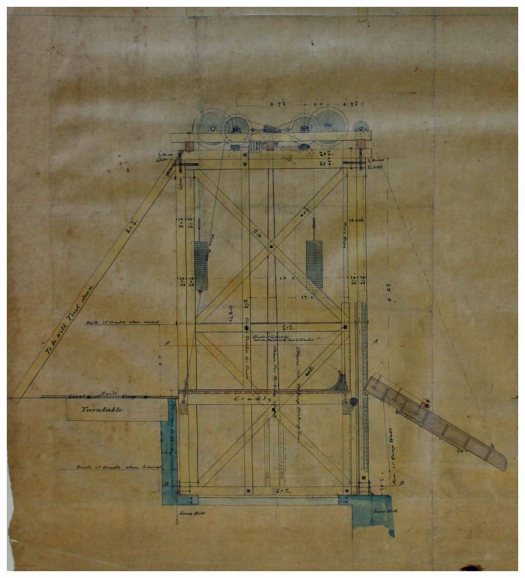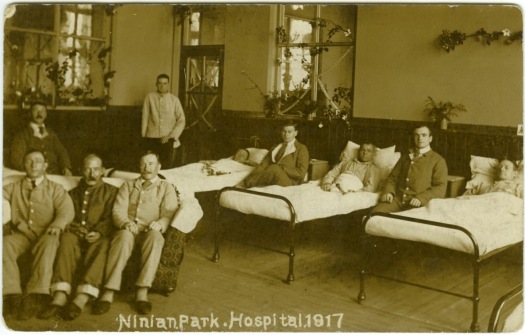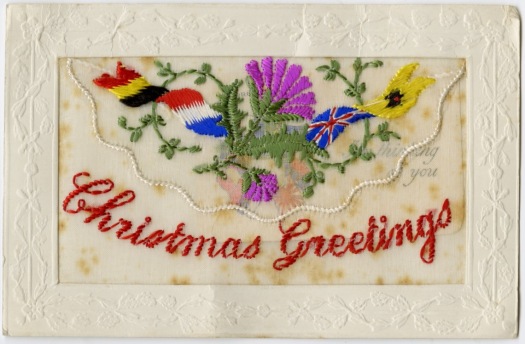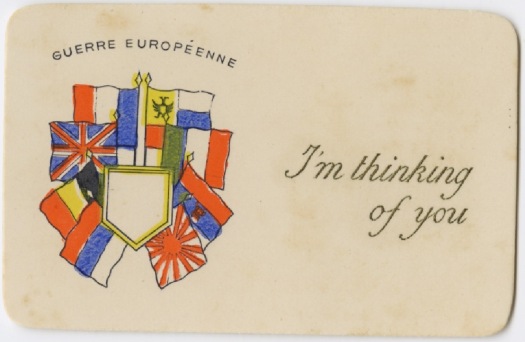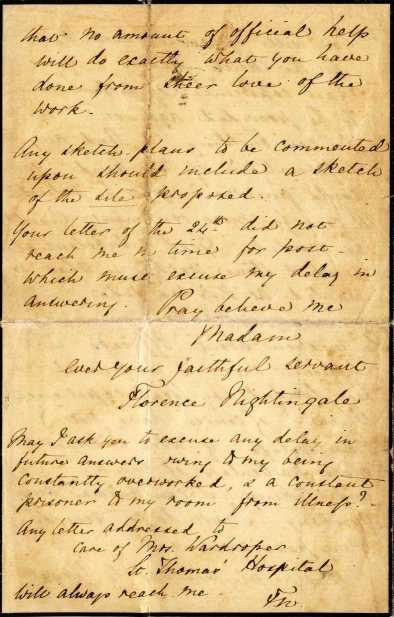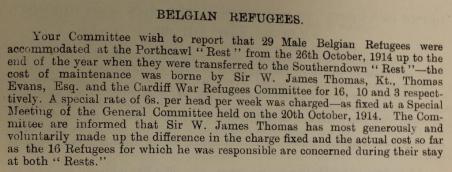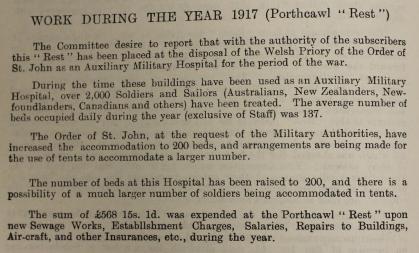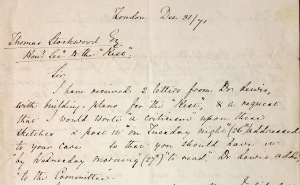With the outbreak of the First World War, many men signed up to serve their country, either voluntarily or because they were called up by the military. Local authorities were affected by this as much as any other field of work. Naturally those who had stayed behind and continued to work with the local authorities were keen to find out how those who were at the Front were getting on.
Good news came from the Front in the form of awards bestowed on soldiers for their actions in combat. In September 1915, Gelligaer Urban District Council noted that James Green had been recommended for a Distinguished Conduct Medal. In December 1917 Private Tudor Lewis received the Military Medal. And on New Year’s Day 1918, it was announced that Sergeant Ivor Jones had won both the Distinguished Conduct and Military Medals.

Several other employees were recognised for their distinguished service and bravery.
In January 1917, Porthcawl Urban District Council heartily congratulated Lieutenant Tamblyn and Corporal Nicholls who had both been awarded for conspicuous bravery while on active duty. And in July of that year Maesteg Urban District Council congratulated Sergeant Fred Davies who had received the Distinguished Conduct Medal (DCM).
In June 1917 Bridgend Urban District Council passed on their congratulations to the parents of Oscar Powell and Frank Howells who had both received the Military Medal. In December of that year Second Lieutenant Steve Jenkins, son of one of the council members was also awarded the Military Medal. In January of 1918 Ogmore and Garw Urban District Council reported that Mr King, a former Captain of the Nantymoel fire brigade had received the Distinguished Conduct Medal.
At the end of the War in November 1918, Aberdare Urban District Council revealed that Major R D Williams, the son of a councillor, had won the Distinguished Service Order.
Another source of good news would be when servicemen were promoted. In June 1916 Bridgend Urban District Council congratulated Lieutenant Colonel F W Smith on his promotion to the Command of the 16th Welsh (Cardiff City) Battalion. In May 1917 Gelligaer Urban District Council reported on the rapid rise of Mr Emlyn Evans. Starting as a Private in September of 1915, he became a Lance Corporal in November of that year, then a full Corporal a month later. Six months after that he became a Sergeant before becoming a Company Sergeant Major in December of 1916. The following month he transferred to the Royal Flying Corps and became a Flight Sergeant and then in April of 1917 he became a Sergeant Major.
Sometimes just hearing the news that someone at the Front was alive and well was enough cause for celebration. In September 1914 Penybont Rural District Council congratulated Colonel Turbervill on the news that his son Captain Turberville was in good health. However sadly, in May of 1915, Colonel Turbervill’s grandson was killed in action.
Along with the joy of hearing of colleagues receiving awards for valour, there was also the despair of hearing the news of the death or wounding of those serving at the Front. In September 1914 the Earl and Countess of Plymouth lost a relative, Archer Windsor Clive. Several local authorities voted to pass their condolences, which were followed up by replies of thanks in kind from the Plymouth Estate.
In November 1914 Penybont Rural District Council conveyed their sympathy to Colonel Nicholl on the death of his son Lieutenant Nicholl. In December, Mountain Ash Urban District Council expressed their condolences to the family of Lord Aberdare, whose eldest son had been killed. In October 1915, Porthcawl Urban District Council proposed a vote of condolence for the families of Lieutenant Sydney Randall Jenkins and Sergeant Evan Rogers.
In November 1916 Dr M J Rees, who had been for many years the medical officer of health for Aberdare Rural District Council, was reported killed in action. In July of 1917 three former employees, Motorman Amos, Motorman E Wiltshire and Conductor AC Sims, were killed in action.
In December 1917 Maesteg Urban District Council experienced a triple loss, with the deaths of Second Lieutenant Hugh Grade, Private Harold Edwards and Private Charles Corbett. Another triple loss was announced at the end of the war, with the deaths of Privates Ivor Evans, A Meldrum and Hillman.
Not all losses occurred at what most people would view as the ‘Front’, namely France and Belgium. Some of the above losses may have occurred in other parts of the world. The Gallipoli campaign of 1915 saw British Empire troops serving in modern day Turkey, while several campaigns took place in both Africa and the Middle East. It is also worth noting that not all losses occurred on the ground. There were those who served in the air with the Royal Flying Corps (later Royal Air Force) and Royal Naval Air Service (later Fleet Air Arm), and there were those who served with either the Marines or the Navy. One loss at sea was in October of 1914 when Gelligaer Urban District Council reported the death of Lieutenant Commander McGregor when HMS Hawke was sunk by a German U boat in October of 1914.

The local authority minutes at Glamorgan Archives show us that news from the front was highly sought after by councillors and employees. Although good reports were hoped for sadly it was often bad news that was received.
Andrew Booth, Relief Records Assistant

